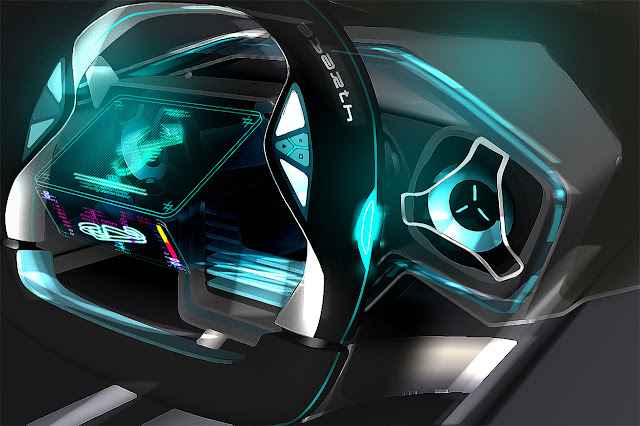Google self-driving car
Introduction:
This essay is about a
self-driving car made by Google.(1) The project is currently being led by
Google engineer Sebastian Thurn. Thrun’s team, which consists of 15
other engineers working for google, created the robotic vehicle which won the
2005 DARPA Grand Challenge. The prize was 2 million US dollars.
Main points:
·
The US state of Nevada
passed a law in june 2011 permitting the operation of driverless cars in Nevada
and California.
·
Google has tested several vehicles, including Toyota Prius,
Audi TT and Lexus RX450h, equipped with the system, driving 1000 miles without
any human intervention.
·
The vehicle drives at the speed limit it has stored on its
maps and maintains distance from other vehicles using sensors. The vehicle
provides an override that allows a human driver to take control of the car.
·
There have been two accidents since the vehicle has been
licensed on the roads. In August 2011, a human was controlling the vehicle at
the time of the accident and the other incident involved a driverless car being
rear-ended while stopped at a set of traffic lights.
·
(1)Googles driverless test cars have about $150,000 in
equipment including a $70,000 laser radar system, which is mounted to the roof
of the vehicle.
Problems it solves:
·
(2)Fewer traffic collisions.
·
Reduction of physical road signage, as the vehicle has all
the data saved.
·
Improved fuel efficiency
·
(2)Elimination of redundant passengers-drivers will not have
to be present in the vehicle, the vehicle will act like a
taxi.
Paradigm:
·
Robot Drivers- react faster than human drivers and do not get
distracted, sleepy or intoxicated, they will also also save lives.
·
Intercoms- alert the driver of crossroads and pedastian
crossings
·
Speed limit- the vehicle will obey the speed limit unlike
human drivers.
Conclusion:
This essay was about three
technologies that will change society in the future. I chose the Google
Self-Driving Car for the technology that will change society in the future.
References:
The third reference is a
short clip on youtube of a golf caddy which is self-driven.
·
1).http://en.wikipedia.org/wiki/Google_driverless_car

































